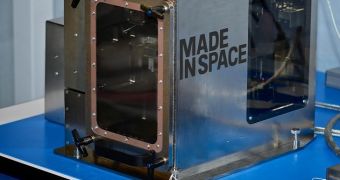Many ideas from science fiction have been put into practice during the past decade, but there is one that has, so far, eluded us: orbital space stations capable of manufacturing their own parts and, eventually, space ships.
The first real step towards space manufacturing has now been achieved. Funnily enough, a privately held company called Made in Space actually pulled it off, and the secret was, you got it, 3D printing.
Space expeditions usually include a number of repair kits and spare parts in case stuff happens and something becomes defective on the shuttle, station or, say, a satellite.
But whenever a real problem crops up, NASA, or their equivalent, has to send out another rocket with a new team of astronauts to help.
That, or a remote-controlled craft of some sort. In any case, it's very costly, risky and time-consuming to do things that way. It would be a lot easier if the people out in space could produce their own replacement parts.
A means for manufacturing things would also be a boon whenever someone is bored, or in case they get some idea for a side project. Or, really, for anything.
3D printing has not provided the first real means of manufacturing things in outer space. Made in Space, after establishing a collaboration with NASA, has developed a 3D printer that can be transported into orbit and used by astronauts on the International Space Station.
They spent 20,000 hours tasting various 3D printing technologies and managed to pass the final NASA certifications and testing process ahead of schedule. In the process, they've become experts in designing, building, and testing hardware for spaceflight.
The Made in Space 3D printer will be sent into space in August this year (2014) aboard the SpaceX CRS-4 cargo resupply mission. Originally, it was meant to be loaded on the SpaceX CRS-5 mission in November.
Once there, it will be installed in the Microgravity Science Glovebox (MSG) on the station, at which point it will print 21 demo objects (tools, parts, test coupons). High-definition video will be sent to NASA and Made in Space researchers, for them to establish if the printer works as intended and what issues still have to be smoothed out.
After that, an Additive Manufacturing Facility will be installed on the ISS. Made in Space hopes that, eventually, even companies, instead of Government Agencies, will work together to bring full-scale manufacturing into space. Though exactly how long it will be before we make our own spaceships up there remains to be seen.

 14 DAY TRIAL //
14 DAY TRIAL //